Maybe you have heard these banging little creatures called cicadas. If there is something to be said about them is that they are noisy and they thrive during summer. The cicada diet consists primarily of tree sap which is rich in sugar and minerals. They have long, thin bodies that they use to suck up the sap from the roots of plants.
The cicadas have hollow chitin tubes in their exoskeletons, which contain enzymes that break down the tree sap into simple sugars. They bring these sugars back to their bodies for use as energy. This article will unravel different facts about cicadas and whether you can eat them or not.
Table of Contents
Cicada Identification | What Do They Look Like?
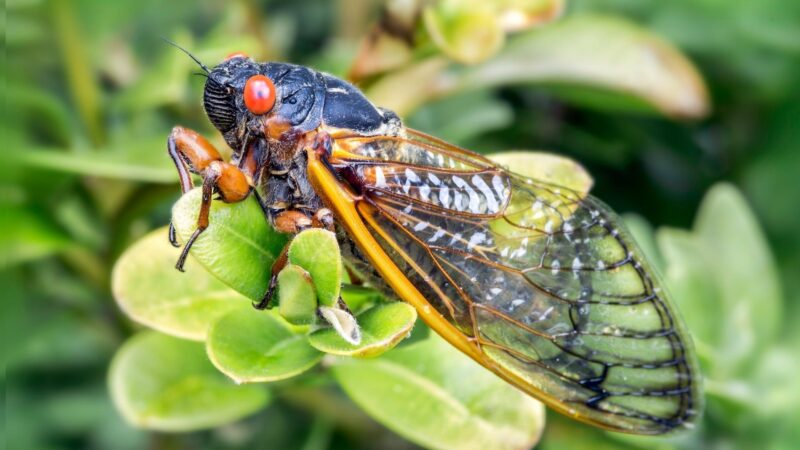
The cicada is a large insect that belongs to the order Hemiptera. Their body length is about 1.5 inches (3.8 cm). The head of the cicada has two eyes and three ocelli (simple eyes) situated on top of the head. They also have four long legs and a pair of wings, which it uses when flying from tree to tree in search of nectar or water.
Moreover, they are insects that have an appearance similar to a locust. They have wings, legs, and antennae. The top half of the body is covered with a shell called an elytron. The elytron is hard and shiny, like a hard-boiled egg. They make noise by rubbing together the parts of their bodies that are covered by their elytra (the hard outer coverings on the top of their bodies).
Cicadas have strange mouthparts and breathe through small holes near their abdomen called spiracles. These holes open during the day when they need air but close at night so they can conserve energy by sleeping overnight inside their tunnels below ground level.
Life Cycle of Cicadas
The life cycle of a cicada begins with an egg laid by the female on a leaf or twig. The egg hatches into a nymph and stays in this form until it emerges from its cocoon. When the nymph emerges, it molts into an adult form and then mates with another cicada to produce fertilized eggs (ova). After mating, males die, and females die after laying their eggs.
The fertilized eggs hatch into nymphs that feed on plant sap and develop over several weeks. The nymphs molt into adults in late summer, when they begin searching for shelters underground and prepare to overwinter as adults—they mate in preparation for hibernation.
The periodical cicada usually lives for 13 or 17 years before it dies. The periodical cicada is the only species of cicada that can reproduce itself by laying eggs in the soil during its lifetime. On the other hand, annual cicadas live two to five years approximately.
Can You Eat Cicadas?
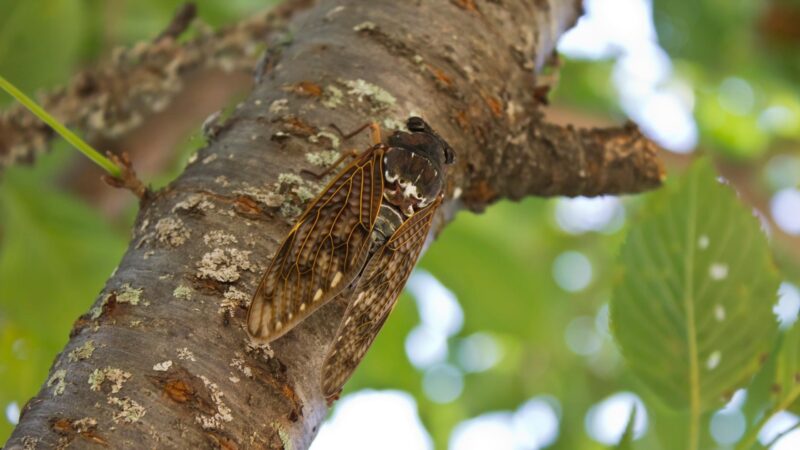
While cicadas can look a bit odd and creepy, they are quite good for you. They are comparable to crickets which are a great source of protein and are also an excellent source of iron which helps make red blood cells. Although there should be some precautions before eating them since it is not for everyone.
What Is a Cicada’s Favorite Food?
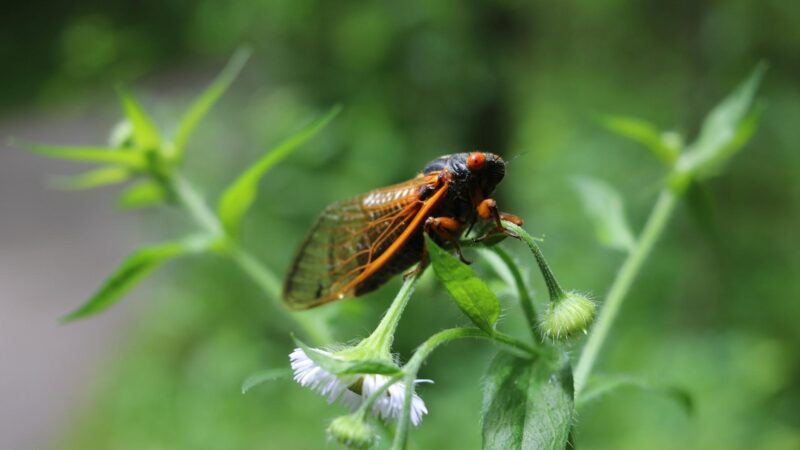
A cicada’s favorite food is tree sap (also called syrupy tree sap), although they will also eat a variety of other plant juices, including tomato juice and tree sap from conifers (like pine trees).
Do Cicadas Eat Corn?
Cicadas are not known to eat corn. They do, however, feed on tree sap and other plant juices, as well as pollen and nectar. If there is little to no access to tree sap and other plant juices, they might resort to eating other crops, but this rarely happens.
Do Cicadas Eat Blueberry Bushes?
Cicadas feed on sap from plants that contain a lot of sugar; they need this to survive while they’re underground as adults. They may eat blueberry bushes and can be damaged by cicadas, but the damage is usually limited to the roots.
Cicadas eat the leaves and stems of the plant, which causes brown spots on leaves and wilting of some plants. The damage is more severe when the cicada population is large. When there are a lot of cicadas around (which means more young cicadas that need to be fed), they might damage up to 80% of plants in a region.
Do Cicadas Eat Herbs?
Cicadas do not eat plants or herbs. Rather, they subsist on nectar from flowers and trees.
Do Cicadas Eat Mosquitoes?
Cicadas do not eat mosquitoes. They are not even parasitoids of mosquitoes, and they have no interest in eating or destroying insects. Cicadas are insects that live in the ground, where they feed on plant roots and sap.
Do Cicadas Eat Flowers?
Cicadas do not eat flowers. They do not consume any part of the plant they live on, and they certainly don’t have mouths. They can only suck liquid from the ground and can’t eat solid food.
What Do Full Grown Cicadas Eat?
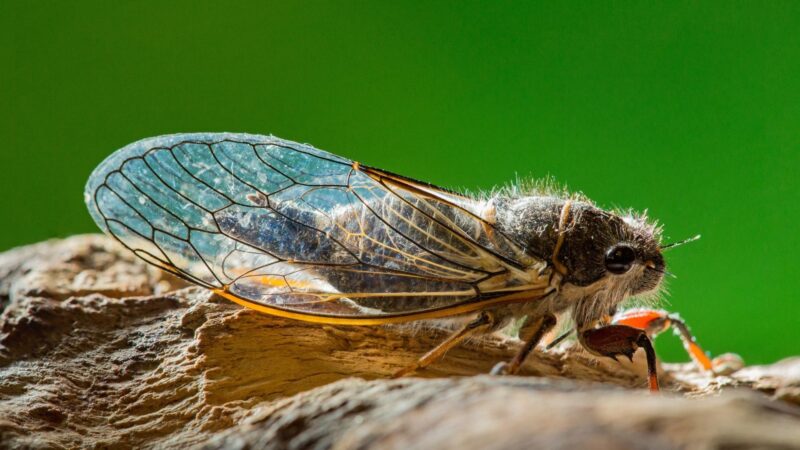
What Do Cicadas Eat and Drink?
Full-grown cicadas eat tree sap. They’re not picky about what they eat, as long as it’s liquid. They can go for hours without eating, and will even drink salt water if necessary. The cicada’s mouth has a groove on the underside of its head that allows it to suck up sap from trees with its straw-like mouthparts.
What Do Cicadas Eat Underground?
One of the most interesting things about cicadas is that they eat sap. Sap comes from trees and is used as food by many other creatures, including ants and termites. But cicadas don’t just drink sap—they dig through the ground to get at it.
These bugs live underground and eat sap that flows through their tunnels. When they come out to feed, you can see them quivering up and down as they pump their abdomen muscles.
What Do Cicadas Eat Above Ground?
Cicadas do not eat anything above ground. They live off of plant sap and nectar, and they get their nutrients from the soil.
What Do Cicadas Eat in Captivity?
Cicadas eat the xylem found in the roots of plants. It is preferred to confine them in a place with plants where they can suck up juices. Cicadas feed on liquid materials rather than solid ones because their digestive system can only absorb liquids.
Can You Keep Cicadas as Pets?
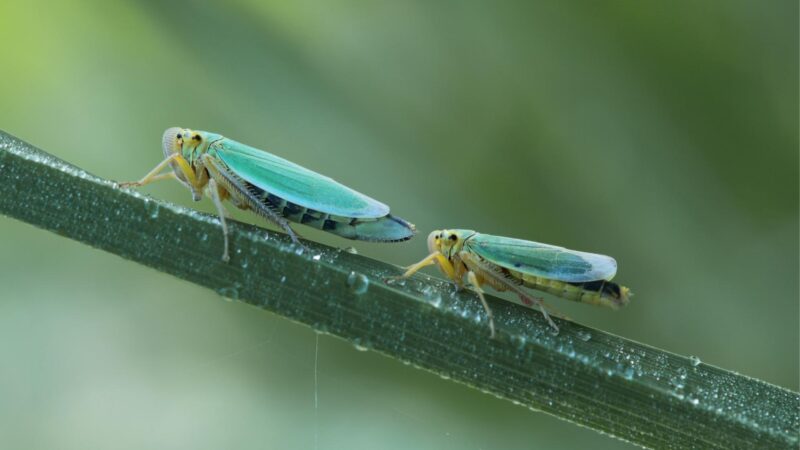
Unfortunately, you can’t keep cicadas as pets. They’re not a good fit for most homes because they’re loud. They can’t survive in cold temperatures, so they need somewhere warm and dry, or else they will die. In case you find yourself petting one, you have to make sure that there are available sources of their food, like plants where they can suck up juices for nutrients.
What Eats Cicadas?
Do Squirrels Eat Cicadas?
Squirrels eat cicadas. They’re the most common insect eaten by squirrels.
Can Dogs Eat Cicadas?
Dogs can eat cicadas, but it’s not recommended. Dogs usually do not eat insect larvae, so they are not likely to consume cicadas.
The exoskeleton of the cicadas is most likely difficult to digest for dogs which may cause problems. However, some dogs have been known to eat cicadas without any ill effects.
Do Birds Eat Cicadas?
Birds eat cicadas. Many types of birds eat cicadas, including raptors, songbirds, and cardinals. Birds also sometimes eat the cicada’s exoskeletons, which are made of calcium carbonate.
Do Bats Eat Cicadas?
Bats are known to eat many different types of insects, including cicadas. Cicadas are not a common food source for bats, but they have been found in the stomachs of bats. Cicadas are not a common food source for bats because they do not have the same digestive systems as other animals, so they cannot digest them easily.
Do Chickens Eat Cicadas?
Chickens do eat cicadas. This isn’t a surprise because chickens are omnivores and will eat just about anything. Cicadas are a good source of protein, so it makes sense that chickens would want to eat them.
Do Snakes Eat Cicadas?
Snakes eat cicadas because they are an easy source of food and can often be found in large numbers together on trees or in rock crevices surrounding their dens.
Do People Eat Cicadas?
People eat cicadas. Cicadas are not poisonous and are easily digested, so they make a great food source for humans. The insects are still alive when they are eaten—they have to be killed first—but their shells provide a nutritious meal. Although some people who are allergic to crustaceans should be careful when eating this because of its similarity with the latter.
In some areas of the world, cicadas have been considered an aphrodisiac. The belief was that if you ate a cicada, you would have an increased sexual desire.